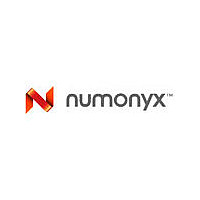NAND128W3A2BN6F NUMONYX, NAND128W3A2BN6F Datasheet - Page 34

NAND128W3A2BN6F
Manufacturer Part Number
NAND128W3A2BN6F
Description
IC FLASH 128MBIT 48TSOP
Manufacturer
NUMONYX
Specifications of NAND128W3A2BN6F
Format - Memory
FLASH
Memory Type
FLASH - Nand
Memory Size
128M (16M x 8)
Interface
Parallel
Voltage - Supply
2.7 V ~ 3.6 V
Operating Temperature
-40°C ~ 85°C
Package / Case
48-TSOP
Package
48TSOP
Cell Type
NAND
Density
128 Mb
Architecture
Sectored
Block Organization
Symmetrical
Typical Operating Supply Voltage
3|3.3 V
Sector Size
16KByte x 1024
Timing Type
Asynchronous
Interface Type
Parallel
Lead Free Status / RoHS Status
Lead free / RoHS Compliant
Speed
-
Lead Free Status / RoHS Status
Lead free / RoHS Compliant
Available stocks
Company
Part Number
Manufacturer
Quantity
Price
Company:
Part Number:
NAND128W3A2BN6F
Manufacturer:
MICROCHIP
Quantity:
1 000
Part Number:
NAND128W3A2BN6F
Manufacturer:
ST
Quantity:
20 000
Software algorithms
7.3
7.4
34/59
Garbage collection
When a data page needs to be modified, it is faster to write to the first available page, and
the previous page is marked as invalid. After several updates it is necessary to remove
invalid pages to free some memory space.
To free this memory space and allow further program operations it is recommended to
implement a garbage collection algorithm. In a garbage collection software the valid pages
are copied into a free area and the block containing the invalid pages is erased (see
Figure 18: Garbage
Figure 18. Garbage collection
Wear-leveling algorithm
For write-intensive applications, it is recommended to implement a wear-leveling algorithm
to monitor and spread the number of write cycles per block.
In memories that do not use a wear-leveling algorithm not all blocks get used at the same
rate. Blocks with long-lived data do not endure as many write cycles as the blocks with
frequently-changed data.
The wear-leveling algorithm ensures that equal use is made of all the available write cycles
for each block. There are two wear-leveling levels:
The second level wear-leveling is triggered when the difference between the maximum and
the minimum number of write cycles per block reaches a specific threshold.
First level wear-leveling: new data is programmed to the free blocks that have had the
fewest write cycles.
Second level wear-leveling: long-lived data is copied to another block so that the
original block can be used for more frequently-changed data.
Invalid
Valid
Page
Page
collection).
Old Area
(Erased)
Free
Page
New Area (After GC)
NAND128-A, NAND256-A
AI07599B












